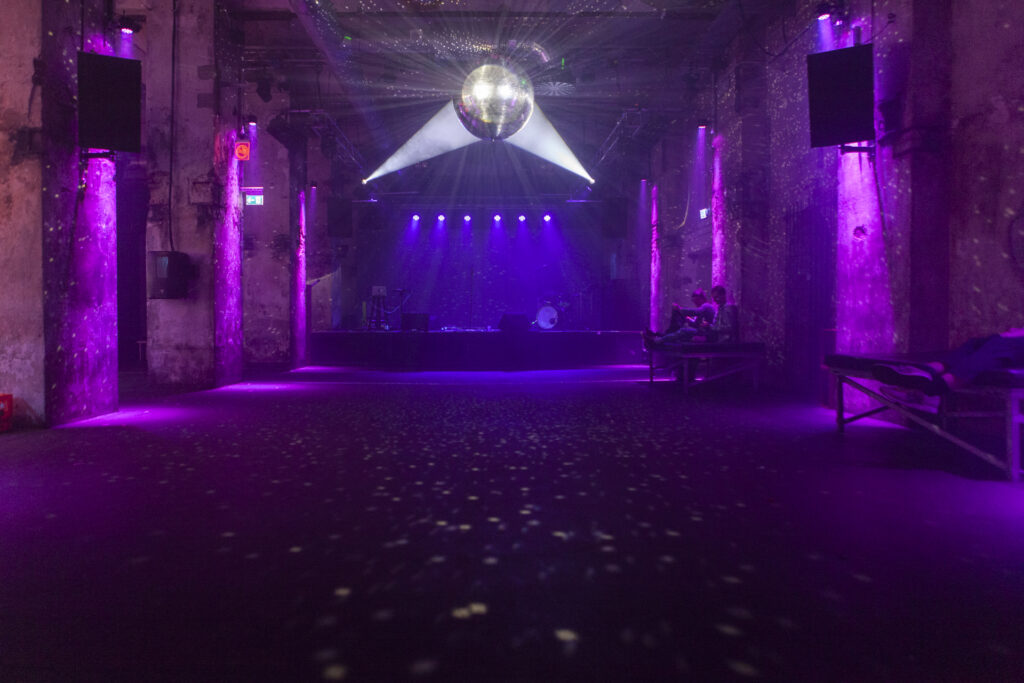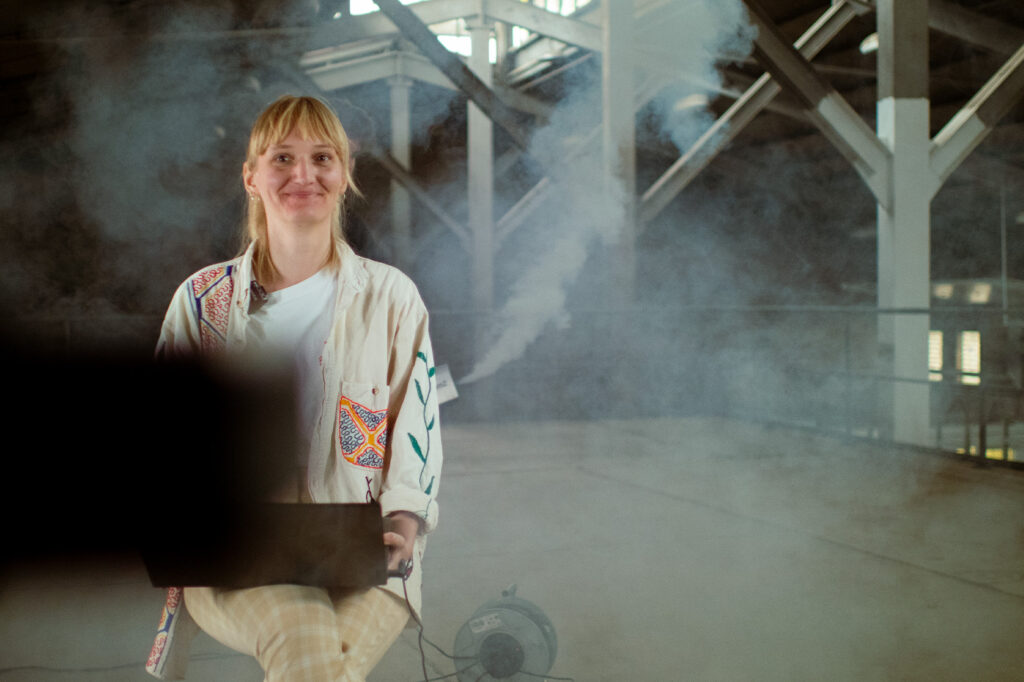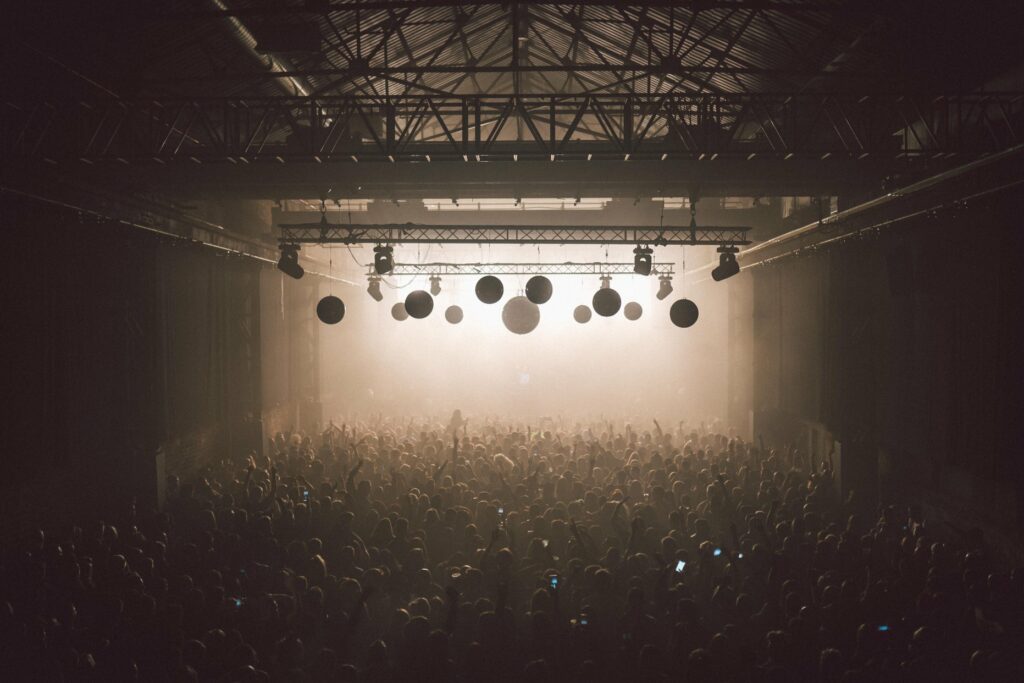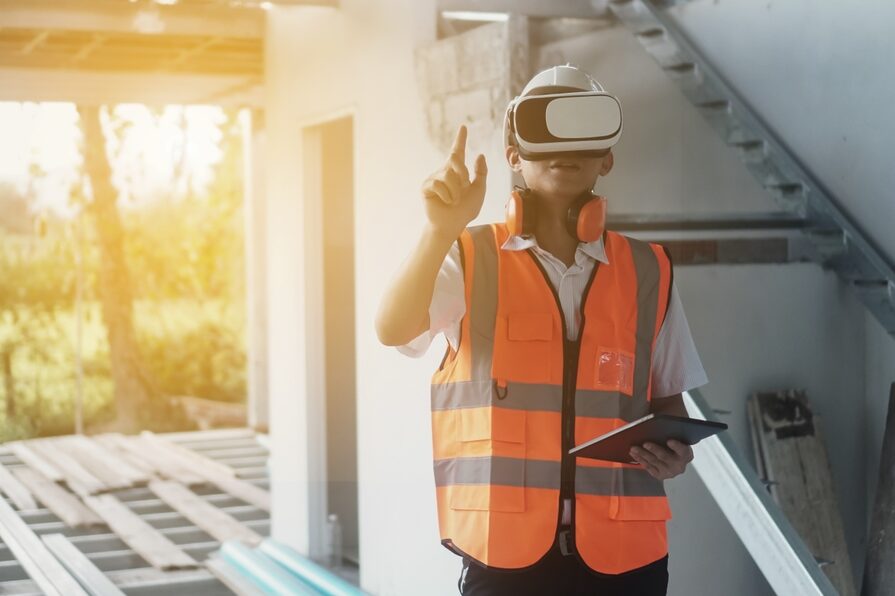Clean Raving

“Any venue heats up quickly. I guess that’s part of the charm of a nightclub, the sweat dripping off the walls. Well, to an extent anyway,” says Andrew Fleming-Brown, painting a vivid picture of British nightlife. But this is no post-lockdown ode to strangers perspiring in dark rooms together again. Instead, our conversation is about a world-first energy solution being installed in his venue.
SWG3 is a sprawling multi-purpose arts, music and cultural hub in Glasgow’s West End. By late-2021 the address will run heating and cooling systems powered by BODYHEAT. As it sounds, the system uses dance floor heat to dramatically reduce carbon emissions.
“The design has been worked through for a while,” says Fleming-Brown, SWG3’s managing director.. “It started in summer 2019; we engaged with a geothermal engineering company, called TownRock Energy, to discuss alternative solutions for our building. We are an industrial building designed for storage, not people. So there are a lot of challenges there, from environmental performance to drainage. But with these buildings generally comes a lot of atmosphere, they make great venues.
“From 2015 onwards we experienced large growth, in terms of our programme, the footprint of the venue, and in terms of turnover. So we started on a £6 million capital programme to develop underused parts of the site. We have three acres of land and buildings, and only use about 50% of that. Like any development, you want it to happen in an environmentally friendly, sustainable way. More than that, though, we were also looking at current operations.

“We were conscious that all the heat generated by people, all that energy, was just disappearing into the atmosphere. Our latest addition, and our largest space, called the Galvanisers, has a lot of volume. It has lots of height, and huge surface area with energy just disappearing. So we thought how can we harness that, reuse the energy?”
Originally intended to be ready for COP26 — the UN Climate Change Conference Glasgow will host in November — work has been delayed due to logistical issues, not technological hurdles. BODYHEAT is a familiar innovation, energy from event attendees channelled to a 17-strong array of boreholes, each between 150m and 200m in size, charging a thermal battery to redistribute power. The concept is unique because it has never met a music venue before.
Phase one, currently being drilled, focuses on the ground floor, where the majority of events take place. This alone could save up to 70 tonnes of carbon waste each year. Plans to expand the project are already in place, too. An additional building within SWG3 opens to the public in 2022 and will also utilise the technology. Meanwhile, the site’s work, retail, and hospitality spaces are earmarked for inclusion in the future.
Costs for the initial stage are £350,000, far over budget for many venues, not least given the long road to recover losses after more than a year of cancelled events and locked doors as a result of the pandemic. To cover this investment, SWG3 received 50% of required funding through a grant from Scotland’s Low Carbon Infrastructure Transition Programme. The other half was borrowed from the government’s District Heating Loan Fund. Breaking even on the investment through energy savings will take around 12 years, emphasising this is a long-term undertaking, and it couldn’t have been announced at a more apt time.
June 2021 saw the Roadmap to Super Low Carbon Live Music published by the Tyndall Centre for Climate Change at the University of Manchester, in conjunction with award-winning electronic band and famed environmentalists, Massive Attack. Cutting to the chase, the report shows how festivals, gigs, and clubs can rebuild for the COVID-19 age with climate impact as a priority.
“We were conscious that all the heat generated by people, all that energy, was just disappearing into the atmosphere."
“A lot of venues aim to be carbon neutral by 2030, we want to beat that and obviously this is a big part of our push,” Fleming-Brown says. “But we are also looking at other operational approaches to get there. This isn’t the only solution, but it is a starting point. We ask how viable the system would be if financial backing had not been available. Without government support I don’t see that [the system is accessible] right now. What should be considered is match funding.”
At the other side of the UK, Bristol Beacon, formerly Colston Hall, is a Grade II listed building dating back to 1867 currently undergoing a £45 million transformation set for completion in 2023. Hope Solutions, also based in the English city, is working with the venue on sustainability projects. The overall ambition is to hit net-zero carbon emissions by the turn of the next decade.
“With any building there is a finite mains power feed. Quite often this can be upgraded but that’s quite costly. So we’re looking at whether batteries could be used, possibly to facilitate peak shaving. The main power feed can cope with most things, but every so often you get a show coming through that needs more. Can the battery help power that?” says Luke Howell, founder and director of Hope Solutions, referencing companies like Konik, which have been marketing batteries as a replacement for generators or a National Grid connection for several years already.
Carbon Neutral Partying
“There’s the potential to have a battery docking station, so you only put it in place when you actually need it. There are a few companies developing decent-sized batteries — 300kwh up to around 1mw. A number of companies are developing batteries that are mobile, and have docking stations, so when it’s not needed the battery goes to the depot and can be plugged back into the grid.” Howell suggests it may also be possible to place docking stations inside venues.
A major issue is again expense. High powered batteries aren’t cheap, but newer, more affordable models could hit the market for 2022’s summer festival season, meaning uptake might be about to significantly increase. But as Howell explains, the ‘dry hire’ nature of batteries has led to a significant gap in awareness of just how powerful this established technology could be.
“A battery gets delivered and doesn’t work in the same way as a traditional generator,” Howell says. “So I’ve been to plenty of events where the right equipment has been there, and there’s plenty of technical expertise, but it hasn’t been configured in the right way. Some companies I know that are bringing this to market will be providing more than just hire; they will be configured in the right way.
“This next generation of batteries will be able to go out at a much more competitive price point, meaning people can pay for a technician to set them up.”
Our conversation moves to other innovations being explored right now. We’re told about kinetic energy floors, with designs for ‘playground foyers’ so crowds can entertain themselves exploring a space while generating electricity for the event. Again, there are drawbacks — storage and capacity — but research is ongoing. Then there’s ZAP Concepts, a zero-air pollution specialist with a web-based tool gauging power requirements more accurately than old methods, which centred on overall amperage of what is being plugged in. Already available to use, the firm is now working towards delivering a new iteration, which takes into account the exact audio and lighting plans for each event. The result is less energy use, ultimately meaning lower impact.
Major interventions usually mean big investment, and that’s hardly par for the course with music venues, many of which are grassroots in nature. Nowhere more so than in Berlin. The German capital is known for its abundance of clubs, many occupying dilapidated buildings, from power stations to swimming pools, as a result of nightlife taking over spaces abandoned amid the economic devastation of both World War Two, and the Berlin Wall. Katrine Gregersen works for Friends of the Earth Germany (BUND) and is part of Club Liebe, which looks at how venues can become greener. She’s clear that high tech is only one part of the story, and more accessible solutions are needed to reach clubs with tight margins.
“We know how much energy a small club consumes over a weekend,” she says. “Three hundred capacity venues in Berlin need around the same amount of energy for one weekend as a single household requires for the year. That’s a lot of energy.
“Three hundred capacity venues in Berlin need around the same amount of energy for one weekend as a single household requires for the year."
“In Berlin we have around 280 official clubs, and a lot of unofficial clubs, maybe even more. Scale it up for Germany — I believe Munich has more clubs per capita than Berlin. This is a big issue.”
In 2019 Club Liebe launched Clubtopia with support from BUND, Clubcommission, Livekomm, the University of Sustainable Development Eberswalde, and the Berlin senate. The project is committed to raising awareness of climate problems facing venues, and possible solutions. It also encourages clubs to sign up for a code of conduct, stipulating specific targets.
Gregersen namechecks Berlin’s famous Club SchwuZ as an example of big impact from small changes. An 80% emissions reduction was achieved by switching to a renewable energy provider. She also points to the significant effect LED lighting has, reassuring us this technology is so advanced it can now replicate the aesthetics of old energy-hungry bulbs. Water consumption is another Clubtopia target, with an overall 40% reduction asked for by the code of conduct. Lo-fi ideas like putting plastic bottles filled with stones in toilet cisterns limiting volume and length of flush prove every little helps.

“I think we are far from [carbon neutral club scenes],” she says, in part referring to the fact artist and audience travel are the biggest contributors to nightlife emissions. But, reassuringly given the challenge ahead, starting conversations is a significant step forward. “When do clubs start to engage with sustainability? When do we reach the audience? It’s getting closer and closer. We do think there is a much bigger interest within the culture and industry to become more sustainable.
“The impact of communication is huge. We see Club Liebe as a way to inspire other people to think about sustainability. It can have a very big impact on how other people see and experience sustainability.”
Gregersen finishes by reiterating what both Howell and Fleming-Brown have said. “When it comes to big investments, of course this cannot happen without funding or support. Money is not there, especially after the pandemic. So for major changes there needs to be more funding. One of our aims is to give the venues a bigger voice and show politicians there is backing for sustainability in the industry and community.”



